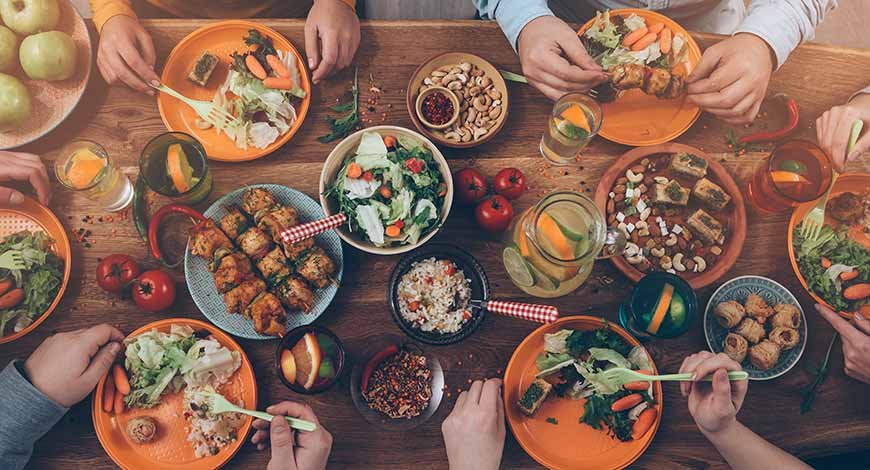Inside BENEO’s new pulse plant: pioneering sustainable protein from faba beans
CII’s holds 2nd edition of the National Nutrition Conclave with the theme – Staple food fortification: Opportunities, challenges and way forward
The Confederation of Indian Industry (CII) organised the 2nd Edition of the National Nutrition Conclave with the theme – Staple food fortification: Opportunities, challenges and way forward, on 22 December.
This year’s digital conclave was an opportunity for Government, Development Agencies, Industries and related stakeholders to come together to converse about the critical challenges and emerging opportunities in food fortification, with a view to create a roadmap for thoughtful action that will strengthen the ecosystem for nutrition especially in the context of the pandemic.
In his opening remarks, Tarun Vi, Country Director, GAIN India said, “Fortification of staple foods is a safe, cost-effective & evidence-based approach to ensure the access to essential micronutrients to everyone, including the most vulnerable group of the society. It is an effective strategy to tackle malnutrition and should be scaled up using multi-stakeholder partnership.”
Inoshi Sharma, Director SBCD, FSSAI shared, “Scaling staple food fortification is the need of the hour to address the nutritional needs of the citizens. The government is approaching the issue from both demand and supply end through consumer awareness and through producers, distributor and retailers by strengthening compliance towards mandatory fortification.”
“Open market availability of fortified rice will bring the change into the consumption pattern and help scaling the uptake. The demand and supply gap of fortified rice needs to meticulously addressed and require the industry to participate in a big way along with state government,” voiced, Surya Kumari, IAS, Vice Chairman and MD, Andhra Pradesh State Civil Supplies Corporation, Andhra Pradesh.
Ganesh Sundararaman, SBU Chief Executive (Staples, Snacks & Meals), ITC Foods further added, “Poshan Abhiyan, ICDS scheme should continuously be refreshed to act as vehicle for fortification and address the issue of malnutrition. Wheat and rice being mass consumption items in the country, the implementation of fortification needs to be addressed holistically right through the supply chain. Seeing at Maida/ refined flour as a prospective vehicle for fortification shall also be considered given its reach across the country.”
Ashutosh Sinha, Head Agri Business, LT foods, spoke about how they met with the challenges of rice fortification with strategic solutions. “First thing did was to use only organic rice kernel to get rid of pesticides, etc. We found that for most of the area, parboiled area is better as it doesn’t create lumps after cooking which is in the case of raw rice.” He too shared how the open market will come as beneficiary for fortified rice too.
Dr Shariqua Yunus, highlighted how the WFP has had a long-standing history in the country in food fortification. “We have worked on fortification of rice and wheat and fortified blended foods. Over the past decade, our focus has been in working with the private sector, their capacity building, equipment requirement by private players and sensitisation. The midday meal scheme, PDS system, Food based safety nets, etc., are the best to help us reach to the masses. Our first pilot in rice fortification was in Odissha, where we covered all the government and government aided schools.” She also mentioned that there are certain challenges in working with food-based safety nets and the government supply chain. The govt supply chain is not a monolith which leaves certain costs on the higher side. Moreover, there is an additional cost capped for the food safety net programme. The cost and the subsidy bill are an issue from the policy side. The GST applicable on fortified rice is 18% as compared to the usual rice which attract only 5% of GST. The industry has also been raising this concern given that though it is a value-added product, it is the need for the better nutrition of the citizens,” she added.
Prabodh Halde noted the importance of food fortification to enhance health and nutrition of the citizens while also lauding FSSAI’s move to ban loosely sold oil which has no added micronutrients and also may adversely impact the health due to poor handling and contamination. “We must be assured that the supply of premixes at relative prices keeps on track given that during the pandemic the imported premixes couldn’t reach. Awareness is the key. Fortification must be taught in the subject to science students to know the micronutrients and their proportion to be used industrially. We need to have a wholesome policy and all the grey areas to be addressed,” were the other points raised by Dr Halde.
This panel discussion focused on discussing on views of government, industry, development partners to delve upon fortification and how it is an effective strategy to tackle malnutrition and get commitments for future with specific focus on wheat, rice and oil fortification. Considering the current situation, it is essential to build capacity and ensure adoption of food fortification within the public sector, ensure social marketing for fortified food and incorporate technological innovation targeting food fortification. The expert panellists from industry and government shared their experience on increasing access in open market, leveraging in MDM, ICDS and PDS, working on supply-side and addressing consumer awareness and will discuss key challenges and way forward.

